A Guide To "The Best" Diving Destinations In the World
Scuba diving offers unmatched adventure in an underwater realm, presenting you with opportunities to explore a reef, marine life, and even sunken shipwrecks . This is a guide to the best diving destinations in the world.

The World's Top Diving Locations
Let's dive into the best diving destinations in the world, while highlighting the optimal times to visit, the difficulty levels of the dives, standout features of each location, and a comparative analysis of costs for both bringing your own equipment and renting on-site.
Maui, Hawaii
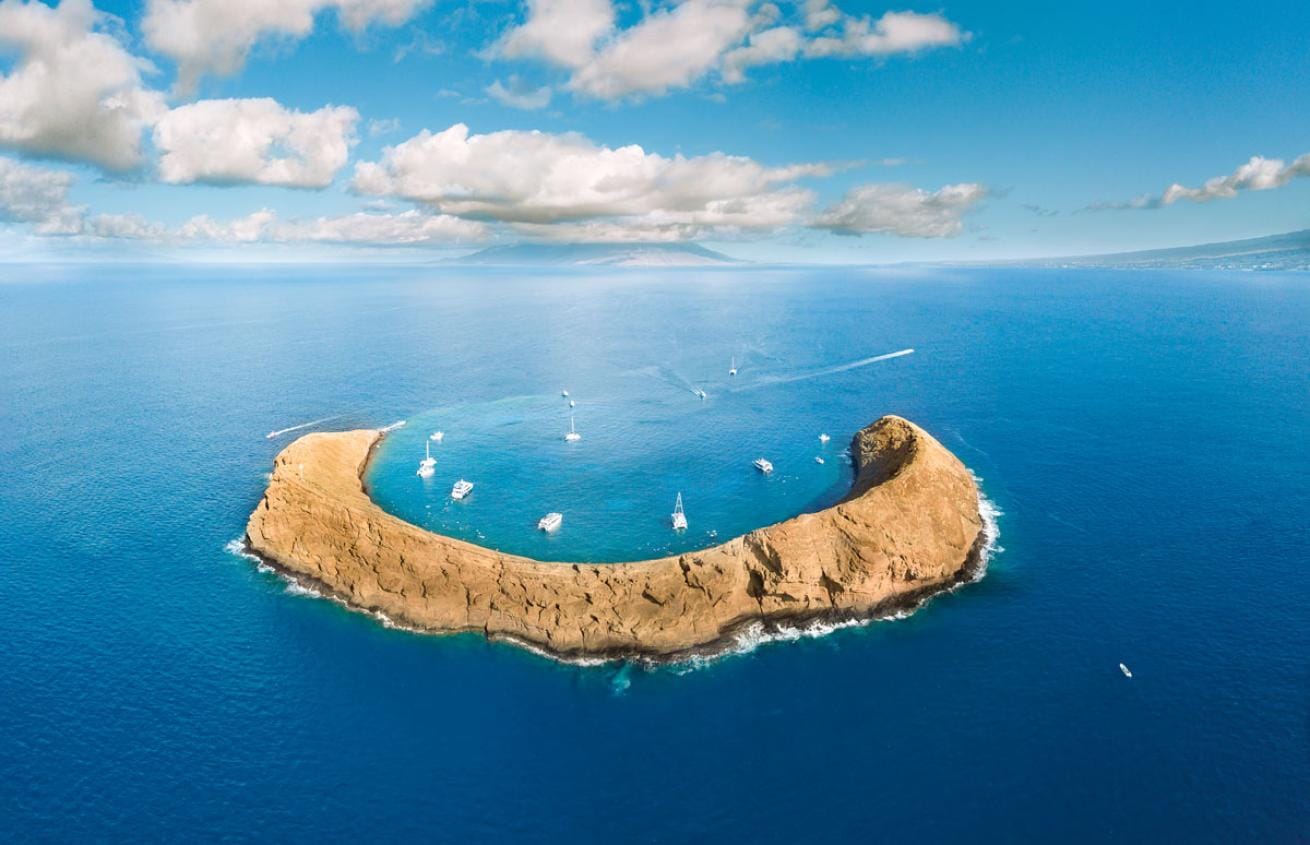
Best Time to Go
Year-round; January through March is peak humpback season.
Difficulty Level
Visibility ranges from 40 to 50 feet at shore sites up to 100-plus feet at Molokini. Welcoming to divers of all skill levels with advanced dive options available.
Destination Highlights
Going on a scuba diving adventure in Maui is not just a journey into the deep blue; it's an immersion into a world of vibrant hues and enchanting marine life that thrives beneath the waves of the Pacific. This Hawaiian island is famed not only for its breathtaking landscapes but also for its underwater sanctuaries, making it a pinnacle experience for divers around the globe.
1. Unparalleled Marine Diversity: Maui's waters are bustling with life. As you descend, you might be greeted by the curious eyes of sea turtles or the gentle glide of manta rays. The coral reefs are bustling cities of activity, hosting hundreds of species of fish in a kaleidoscope of colors. From the delicate movements of the butterflyfish to the sleek flash of a barracuda, each dive is a live performance of nature’s finest works.
2. Exquisite Water Conditions: The clarity of the water around Maui is astounding, providing visibility that can exceed 100 feet on a good day. This clarity allows divers to fully appreciate the intricate details of the underwater topography, including volcanic formations and intricate coral structures, enhancing the sensory feast of the dive.
3. The Molokini Crater: This partially submerged volcanic crater is a marine reserve that offers some of the clearest water conditions and richest marine ecosystems in the world. Diving here is like floating in a giant fishbowl, surrounded by over 250 species of fish, many of which are endemic to Hawaiian waters.
4. Year-Round Diving Opportunity: Maui’s temperate climate means that diving conditions are favorable year-round. Whether you’re escaping a chilly winter or making the most of a summer getaway, the island’s waters welcome you with warm temperatures that make scuba diving a comfortable, year-long option.
5. Environmental Awareness and Conservation: Engaging in scuba diving in Maui also supports environmental education and conservation efforts. Many dive operators contribute to the preservation of marine habitats and educate divers on sustainable practices, making your diving trip not only a pleasure but also a contribution to the preservation of this pristine environment.
6. Suitable for All Levels: Whether you're a novice taking your first breath underwater or an experienced diver seeking a thrilling drift dive, Maui offers a range of sites that cater to different skill levels. Dive schools and guides are available to ensure safety and provide enriching educational content about the local ecology.
Diving in Maui is not just an activity; it's an experience that connects you to the natural beauty of the ocean in a profound and unforgettable way. It invites you to explore the depths of nature’s artistry, making every breath and every dive a memorable encounter with the wild, untamed beauty of our world.
Average Cost to Dive
| Scenario | Cost |
|---|---|
| Own Equipment | $100 - $150 per dive |
| Rent Equipment & Tour | $250 - $300 per dive |
Bonaire
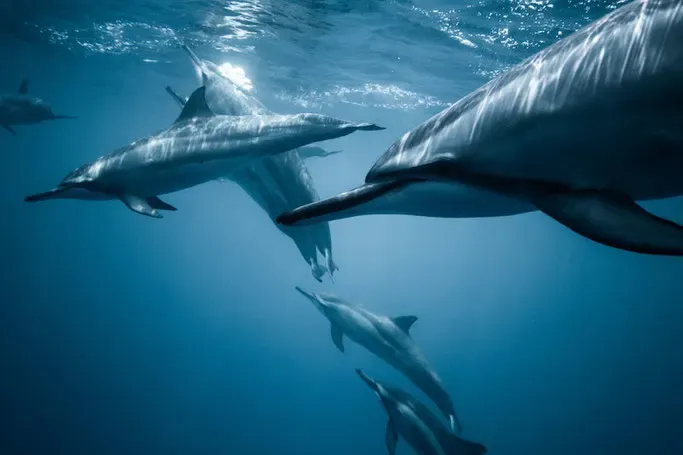
Best Time to Go
Diving is excellent year-round; May through October has fewer crowds.
Difficulty Level
Visibility consistently ranges from 100 to 150 feet. Ideal for beginners due to easy shore access.
Destination Highlights
Scuba diving in Bonaire is a revered pilgrimage for divers seeking a pristine, unspoiled underwater adventure. This small Caribbean island, part of the Dutch Caribbean, is encircled by a marine park that has protected its waters for decades, fostering an environment where marine life flourishes and coral reefs teem with activity. Here’s why diving in Bonaire is an unforgettable experience:
1. A Protected Marine Sanctuary: Bonaire National Marine Park covers the entire coastline of the island, offering over 86 dive sites. This protection has preserved the vibrant health of the reefs, making it a sanctuary for both marine life and divers. The commitment to conservation ensures that each dive is as breathtaking as the last.
2. Shore Diving Freedom: Bonaire is renowned for its unique “drive and dive” setup. With easily accessible dive sites just steps from the shore, divers have the freedom to explore at their own pace without the need for a boat. This ease of access transforms the diving experience, offering a relaxed and flexible approach to underwater exploration.
3. Exceptional Water Clarity and Conditions: The waters around Bonaire are famously clear, with visibility often extending beyond 100 feet. Such clarity not only enhances the beauty of the corals and creatures but also makes it ideal for underwater photography. The calm waters and gentle currents provide safe conditions for divers of all skill levels.
4. Diverse Marine Life: The coral reefs of Bonaire are a habitat for a diverse array of marine life, from tiny, colorful nudibranchs to large, graceful sea turtles. Schools of tropical fish swarm the corals, and divers might spot seahorses, parrotfish, angelfish, and even the occasional passing eagle ray.
5. Year-Round Diving and Ideal Conditions: Bonaire’s dry climate and steady weather patterns make it a year-round destination for divers. The water temperature remains warm throughout the year, making extended dive sessions and multiple dives per day a comfortable reality.
6. Commitment to Sustainability: Diving in Bonaire is not only about enjoyment but also about respect for the environment. The island’s dive shops and operators emphasize eco-friendly practices and encourage divers to participate in conservation efforts, such as lionfish culls and coral restoration projects.
7. A Welcoming Diver Community: Bonaire’s diving scene is supported by a tight-knit community of diving enthusiasts and professionals. This creates a warm, welcoming atmosphere for newcomers and seasoned divers alike, where knowledge, stories, and tips are freely shared.
Diving in Bonaire is more than just a leisure activity; it’s an engaging experience that connects divers with the vibrant life of the Caribbean Sea in a deeply personal and impactful way. The island’s commitment to preserving its natural beauty ensures that each dive is not only a personal journey but also a contribution to the ongoing conservation of one of the world’s most precious underwater treasures.
Average Cost to Dive
| Scenario | Cost |
|---|---|
| Own Equipment | $75 - $125 per dive |
| Rent Equipment & Tour | $200 - $250 per dive |
Roatan Island, Honduras
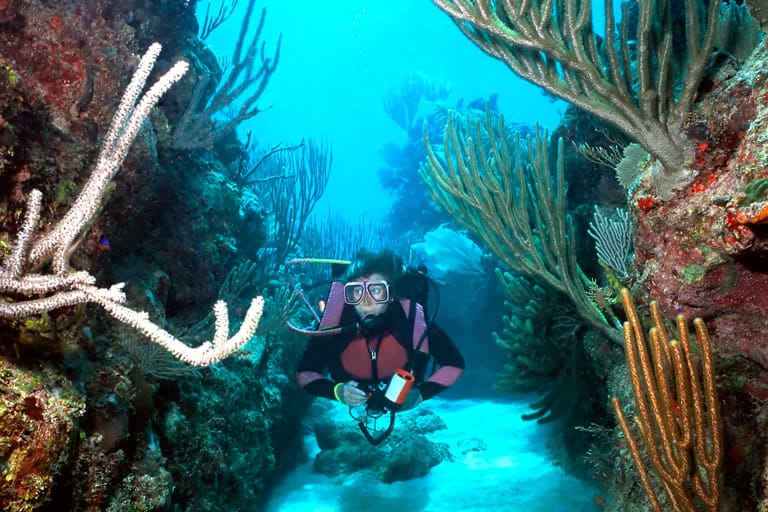
Best Time to Go
Year-round; October and November may see rain and storms; July and August are very warm.
Difficulty Level
Visibility ranges from 70 to 110 feet, suitable for all experience levels.
Destination Highlights
Roatan, located within the Bay Islands of Honduras, is a paradise for scuba divers seeking an underwater experience in the heart of the Mesoamerican Barrier Reef, the second-largest reef system in the world. The island's lush, mountainous landscapes transition seamlessly into a marine paradise, offering a spectacular setting for diving adventures. Here's why Roatan stands out as a premier diving destination:
1. Diverse Dive Sites: Roatan boasts an impressive variety of dive sites ranging from sheer walls and sandy slopes to mysterious shipwrecks and vibrant coral gardens. Sites like Mary's Place, with its dramatic crevices and lush coral overhangs, and the El Aguila wreck, a purpose-sunk freighter now teeming with life, offer diverse environments for exploration.
2. Close Proximity to the Reef: Many of Roatan’s dive sites are located just a short boat ride from shore, with the reef almost touching the island in some places. This accessibility makes it possible to reach breathtaking underwater landscapes within minutes, maximizing your time among the stunning coral formations and diverse aquatic life.
3. Exceptional Marine Biodiversity: The warm, clear waters of Roatan are a sanctuary for an array of marine creatures. Divers can encounter everything from playful dolphins and majestic sea turtles to myriad tropical fish, moray eels, and even the elusive whale shark. The vibrant coral ecosystems support a healthy, diverse marine population, making every dive an adventure.
4. Ideal Conditions for All Divers: Roatan's waters are known for their warmth and clarity, with visibility often extending up to 100 feet. These conditions are perfect for both novice and experienced divers. The island also offers numerous diving schools and certifications, making it a great place to learn diving or advance your skills.
5. Eco-Tourism and Conservation Efforts: Roatan is committed to marine conservation, with several initiatives in place to protect its aquatic life and coral reefs. Dive operators often participate in reef restoration projects and promote eco-friendly diving practices, enhancing the sustainability of diving tourism on the island.
6. Year-Round Diving: The climate in Roatan is conducive to year-round diving. While the dry season (from March to September) offers the calmest seas and highest visibility, the wet season also provides unique opportunities to see different aspects of marine life as the ecosystem reacts to changes in weather patterns.
7. A Thriving Dive Community: The island’s friendly and welcoming dive community adds to the allure of Roatan as a top diving destination. Local dive shops and resorts often host social events, providing a communal atmosphere where divers can share stories and tips, further enriching the diving experience.
Diving in Roatan is not just about exploring the beauty of the underwater world; it's also about experiencing the warm Caribbean culture and participating in the preservation of one of the most breathtaking marine environments on the planet. Each dive offers a unique opportunity to connect with nature in its most pristine form, making Roatan a must-visit location for any diving enthusiast.
Average Cost to Dive
| Scenario | Cost |
|---|---|
| Own Equipment | $100 - $150 per dive |
| Rent Equipment & Tour | $200 - $275 per dive |
Cairns, Australia
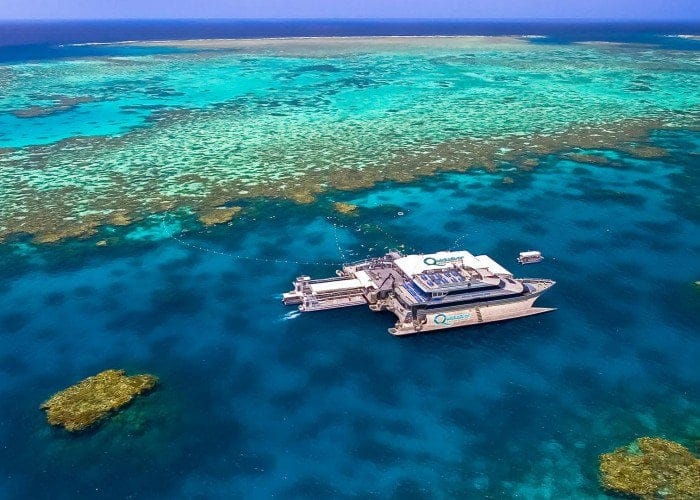
Best Time to Go
Year-round; peak season from October to December; June and July for dwarf minke whales.
Difficulty Level
Visibility varies from 60 to 90 feet. Suitable for a range of divers from beginners to experts.
Destination Highlights
Cairns, Australia, is a gateway to the underwater wonders of the Great Barrier Reef, the largest coral reef system in the world. This city is not just a bustling tourist hub; it's a launchpad for some of the most spectacular scuba diving experiences globally. Diving in Cairns offers not only breathtaking marine biodiversity but also the chance to witness the grandeur of this UNESCO World Heritage site firsthand. Here’s why Cairns is a top diving destination:
1. Direct Access to the Great Barrier Reef: Cairns is ideally positioned just a boat ride away from numerous dive sites along the Great Barrier Reef. This proximity allows divers to explore different parts of the reef, from the outer reefs to the more secluded coral cays and islands, each offering unique environments and experiences.
2. Incredible Biodiversity: The Great Barrier Reef is home to a vast array of marine life. Divers in Cairns can expect to see over 1,500 species of fish, hundreds of types of coral, as well as mollusks, rays, dolphins, and sea turtles. Seasonal visitors such as minke whales and whale sharks also make this area their home, providing once-in-a-lifetime encounters.
3. World-Class Dive Sites: Cairns offers access to renowned dive sites such as the Cod Hole, known for its friendly potato cod, and the Ribbon Reefs, which boast some of the most pristine coral gardens on the reef. Each site offers unique topographies and inhabitants, making every dive an exciting and different experience.
4. Options for Every Level of Diver: Whether you're a beginner taking introductory dives or an experienced diver looking for challenging adventures, Cairns has something to offer. The region boasts numerous dive schools and courses, ranging from basic certifications to advanced and technical diving qualifications.
5. Commitment to Conservation: Diving in Cairns often includes education about the fragile ecosystem of the Great Barrier Reef. Many operators focus on sustainable practices and contribute to conservation efforts, ensuring that the reef can be enjoyed by future generations.
6. Year-Round Diving Opportunities: While diving conditions are generally best during the Australian winter (June to August) when the water is clearest and stinger presence is reduced, Cairns offers good diving conditions most of the year. This flexibility makes it easier to plan a diving trip that fits into wider travel plans.
7. Vibrant Tourist and Dive Community: Cairns is a lively city with a robust infrastructure supporting divers and tourists. The community here is welcoming, with plenty of opportunities for divers to share experiences and learn from local experts. The city’s nightlife, cultural events, and natural excursions provide plenty to do when not diving.
Diving in Cairns is not just an activity; it's an immersive experience that offers a profound connection with one of the planet’s most spectacular natural wonders. Each dive is a journey into a vivid underwater world, filled with dynamic reefs and a symphony of colorful marine life, all contributing to an unforgettable adventure in the heart of the Great Barrier Reef.
If you are just looking to snorkel, choose Quicksilver and you can see pricing and set up your adventure here.
Average Cost to Dive
| Scenario | Cost |
|---|---|
| Own Equipment | $150 - $200 per dive |
| Rent Equipment & Tour | $300 - $350 per dive |
Gili Islands, Indonesia
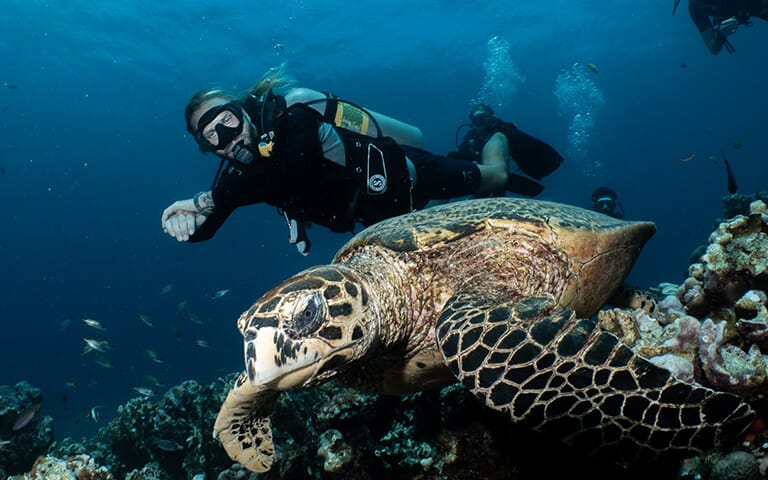
Best Time to Go
Year-round; visibility decreases December through March due to plankton.
Difficulty Level
Visibility ranges from 35 to 120 feet, making it suitable for divers of all levels.
Destination Highlights
The Gili Islands, comprising Gili Trawangan, Gili Meno, and Gili Air, off the northwest coast of Lombok, Indonesia, offer an idyllic diving paradise known for its relaxed atmosphere and vibrant underwater life. These islands are a popular choice for divers of all levels due to their stunning visibility, diverse marine life, and excellent diving conditions. Here’s why the Gili Islands are a fantastic scuba diving destination:
1. Biodiverse Marine Life: The coral reefs surrounding the Gili Islands teem with a spectacular array of marine biodiversity. Divers can encounter everything from small, colorful reef fish to larger pelagic species. Notable sightings include turtles, which are commonly seen grazing on the reefs, reef sharks, and a myriad of macro life ideal for enthusiasts of underwater photography.
2. Range of Dive Sites: The Gili Islands offer more than 25 dive sites that cater to all experience levels. The waters feature a mix of terrains, including soft and hard coral reefs, deep drop-offs, and submerged pinnacles. Sites like Shark Point and Manta Point offer the thrill of encountering larger marine creatures, while Turtle Heaven and Simon’s Reef provide a kaleidoscope of coral and smaller fish species.
3. Ideal Conditions for Learners: The gentle currents and clear waters make the Gili Islands an excellent location for beginner divers. Many dive centers on the islands offer certification courses from basic to advanced levels, making it a perfect place to learn scuba diving or to advance your diving skills.
4. Eco-friendly Diving Practices: The local dive community is actively involved in coral reef conservation and sustainable tourism practices. Efforts include hosting regular clean-up dives and educational programs to promote environmental awareness among divers and tourists.
5. Year-Round Diving: The climate around the Gili Islands is typically tropical, warm, and suitable for diving throughout the year. The water temperatures are pleasant, ranging between 26 to 30 degrees Celsius, which makes for comfortable diving conditions any time you visit.
6. No Motorized Vehicles: One of the unique aspects of the Gili Islands is the absence of motorized vehicles, contributing to a peaceful, relaxed vibe that complements the diving experience. Transportation on the islands is mainly by bicycle or horse-drawn carts, enhancing the serene, laid-back atmosphere.
7. Vibrant Nightlife and Diver Community: Especially on Gili Trawangan, the largest of the three islands, there’s a lively social scene with plenty of options for entertainment after a day of diving. The islands are also home to a diverse, international community of divers and instructors, creating a welcoming environment for sharing experiences and dive stories.
Diving in the Gili Islands not only offers access to spectacular underwater life but also provides a holistic escape into island life where simplicity and nature reign supreme. The combination of excellent diving, a commitment to conservation, and a vibrant community makes the Gili Islands a standout destination for divers seeking both adventure and tranquility.
Want to Snorkel Gili? Check out this sunset snorkel tour.
Average Cost to Dive
| Scenario | Cost |
|---|---|
| Own Equipment | $50 - $100 per dive |
| Rent Equipment & Tour | $120 - $170 per dive |
Each of these top diving destinations offers its own unique set of attractions and conditions, catering to divers of all experiences and preferences. Whether you're looking for the challenging deep dives of Roatan or the accessible shore dives of Bonaire, the world's oceans are brimming with spectacular sites to explore. This guide serves as a starting point for planning your next underwater adventure, equipped with practical information on the best times to dive, key highlights of each destination, and an understanding of the associated costs.
FAQ
What is the best time of year to dive in Maui?
How difficult is diving in Bonaire for beginners?
What are the best dive sites in Roatan?
What makes Cairns a top diving destination?
Not A Member? Save Up To 95% On Flights With Jetsetter Alerts - Airline Mistake fare & Flash Sales Alerts
See Examples